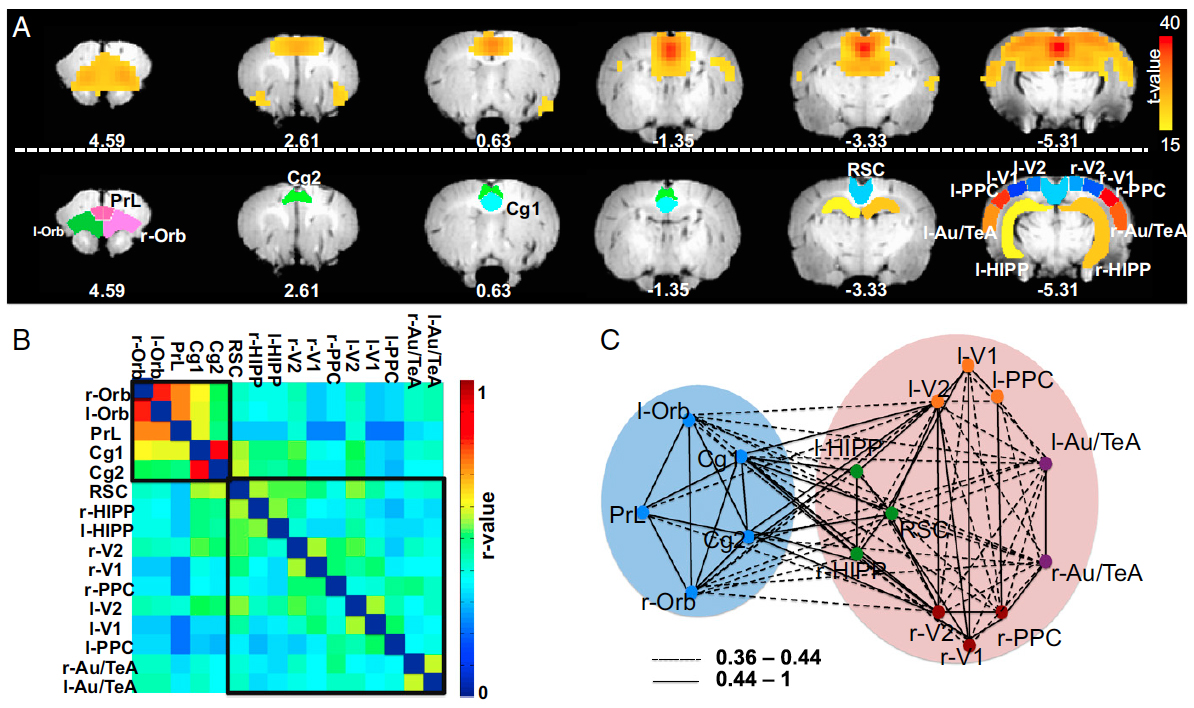Hot Off the Press! – August 2016
Hsu, Li-Ming; Liang, Xia; Gu, Hong; Brynildsen, Julia K; Stark, Jennifer A; Ash, Jessica A; Lin, Ching-Po; Lu, Hanbing; Rapp, Peter R; Stein, Elliot A; Yang, Yihong
Constituents and functional implications of the rat default mode network. Journal Article
In: Proc Natl Acad Sci U S A, vol. 113, no. 31, pp. E4541-7, 2016, ISSN: 1091-6490 (Electronic); 0027-8424 (Linking).
@article{Hsu2016,
title = {Constituents and functional implications of the rat default mode network.},
author = {Li-Ming Hsu and Xia Liang and Hong Gu and Julia K Brynildsen and Jennifer A Stark and Jessica A Ash and Ching-Po Lin and Hanbing Lu and Peter R Rapp and Elliot A Stein and Yihong Yang},
url = {http://www.ncbi.nlm.nih.gov/pubmed/27439860},
doi = {10.1073/pnas.1601485113},
issn = {1091-6490 (Electronic); 0027-8424 (Linking)},
year = {2016},
date = {2016-08-02},
urldate = {2016-08-02},
journal = {Proc Natl Acad Sci U S A},
volume = {113},
number = {31},
pages = {E4541-7},
address = {Neuroimaging Research Branch, National Institute on Drug Abuse, Baltimore, MD 21224; Department of Biomedical Imaging and Radiological Sciences, National Yang-Ming University, Taipei 112, Taiwan;},
abstract = {The default mode network (DMN) has been suggested to support a variety of self-referential functions in humans and has been fractionated into subsystems based on distinct responses to cognitive tasks and functional connectivity architecture. Such subsystems are thought to reflect functional hierarchy and segregation within the network. Because preclinical models can inform translational studies of neuropsychiatric disorders, partitioning of the DMN in nonhuman species, which has previously not been reported, may inform both physiology and pathophysiology of the human DMN. In this study, we sought to identify constituents of the rat DMN using resting-state functional MRI (rs-fMRI) and diffusion tensor imaging. After identifying DMN using a group-level independent-component analysis on the rs-fMRI data, modularity analyses fractionated the DMN into an anterior and a posterior subsystem, which were further segregated into five modules. Diffusion tensor imaging tractography demonstrates a close relationship between fiber density and the functional connectivity between DMN regions, and provides anatomical evidence to support the detected DMN subsystems. Finally, distinct modulation was seen within and between these DMN subcomponents using a neurocognitive aging model. Taken together, these results suggest that, like the human DMN, the rat DMN can be partitioned into several subcomponents that may support distinct functions. These data encourage further investigation into the neurobiological mechanisms of DMN processing in preclinical models of both normal and disease states.},
keywords = {},
pubstate = {published},
tppubtype = {article}
}
The default mode network (DMN) has been suggested to support a variety of self-referential functions in humans and has been fractionated into subsystems based on distinct responses to cognitive tasks and functional connectivity architecture. Such subsystems are thought to reflect functional hierarchy and segregation within the network. Because preclinical models can inform translational studies of neuropsychiatric disorders, partitioning of the DMN in nonhuman species, which has previously not been reported, may inform both physiology and pathophysiology of the human DMN. In this study, we sought to identify constituents of the rat DMN using resting-state functional MRI (rs-fMRI) and diffusion tensor imaging. After identifying DMN using a group-level independent-component analysis on the rs-fMRI data, modularity analyses fractionated the DMN into an anterior and a posterior subsystem, which were further segregated into five modules. Diffusion tensor imaging tractography demonstrates a close relationship between fiber density and the functional connectivity between DMN regions, and provides anatomical evidence to support the detected DMN subsystems. Finally, distinct modulation was seen within and between these DMN subcomponents using a neurocognitive aging model. Taken together, these results suggest that, like the human DMN, the rat DMN can be partitioned into several subcomponents that may support distinct functions. These data encourage further investigation into the neurobiological mechanisms of DMN processing in preclinical models of both normal and disease states.

